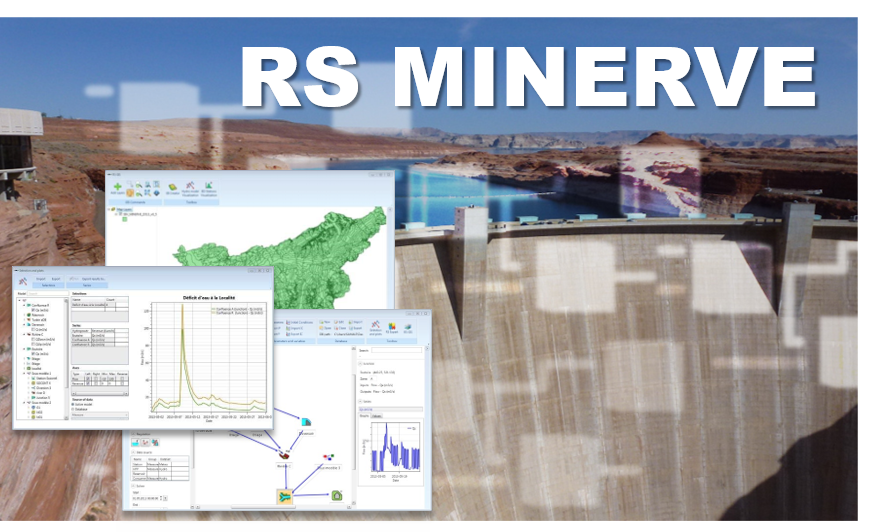
Introduction
RS MINERVE is a software for the simulation of free surface run-off flow formation and propagation. It models complex hydrological and hydraulic networks according to a semi-distributed conceptual scheme. In addition to particular hydrological processes such as snowmelt, glacier melt, surface and underground flow, hydraulic control elements (e.g. gates, spillways, diversions, junctions, turbines and pumps) are also included.
RS MINERVE is based on the same concept than Routing System II, earlier software developed at the Laboratory of Hydraulic Constructions (LCH) at the Ecole Polytechnique Fédérale de Lausanne (EPFL) (Dubois and Boillat 2000; J. García Hernández et al. 2007) and used since 2002 in different projects and theses, such as by Jordan (2007) or Claude (2011). The software presented hereafter, RS MINERVE, is currently developed by the CREALP and HydroCosmos SA, with the collaboration of the previously mentioned LCH as well as the Universitat Politècnica de València (UPV). It has also been used since 2011 in numerous projects and theses (e.g. Javier García Hernández (2011)).
The global analysis of a hydrologic-hydraulic network is essential in numerous decision-making situations such as the management or planning of water resources, the optimization of hydropower plant operations, the design and regulation of spillways or the development of appropriate flood protection concepts. RS MINERVE makes such analyses accessible to a broad public through its user-friendly interface and its valuable possibilities. In addition, thanks to its modular framework, the software can be developed and adapted to specific needs or issues.
RS MINERVE contains different hydrological models for rainfall-runoff, such as GSM, SOCONT, SAC-SMA, GR4J, HBV and SCS. The combination of hydraulic structure models (reservoirs, turbines, spillways,…) can also reproduce complex hydropower schemes. In addition, a hydropower model computes the net height and the linear pressure losses, providing energy production values and total income based on the turbine performance and on the sale price of energy. A consumption model calculates water deficits for consumptive uses of cities, industries and/or agriculture. A structure efficiency model computes discharge losses in a structure such a canal or a pipe by considering a simple efficiency coefficient.
The Expert module, specifically created for research or complex studies, enables in-depth evaluation of hydrologic and hydraulic results. Time-slice simulation facilitates the analysis of large data sets without overloading the computer memory. Scenario simulation introduced the possibility of simulating multiple weather scenarios or several sets of parameters and initial conditions to study the variability and sensitivity of the model results. The automatic calibration with different algorithms, such as the SCE-UA, calculates the best set of hydrological parameters depending on a user-defined objective function.
RS MINERVE program is freely distributed to interested users. Several projects and theses have used and are using this program for study basins in Switzerland, Spain, Peru, Brazil France and Nepal. In addition to the research center CREALP and the engineering office HydroCosmos SA, which currently develop RS MINERVE, two universities (Ecole Polytechnique Fédérale de Lausanne and Universitat Politècnica de València) collaborate to improve RS MINERVE and use it to support postgraduate courses in Civil Engineering and Environmental Sciences.
Release
Approved for Public Release. Distribution Unlimited.
| Centre de recherche sur l’environnement alpin (CREALP) |  |
| HydroCosmos SA |  |